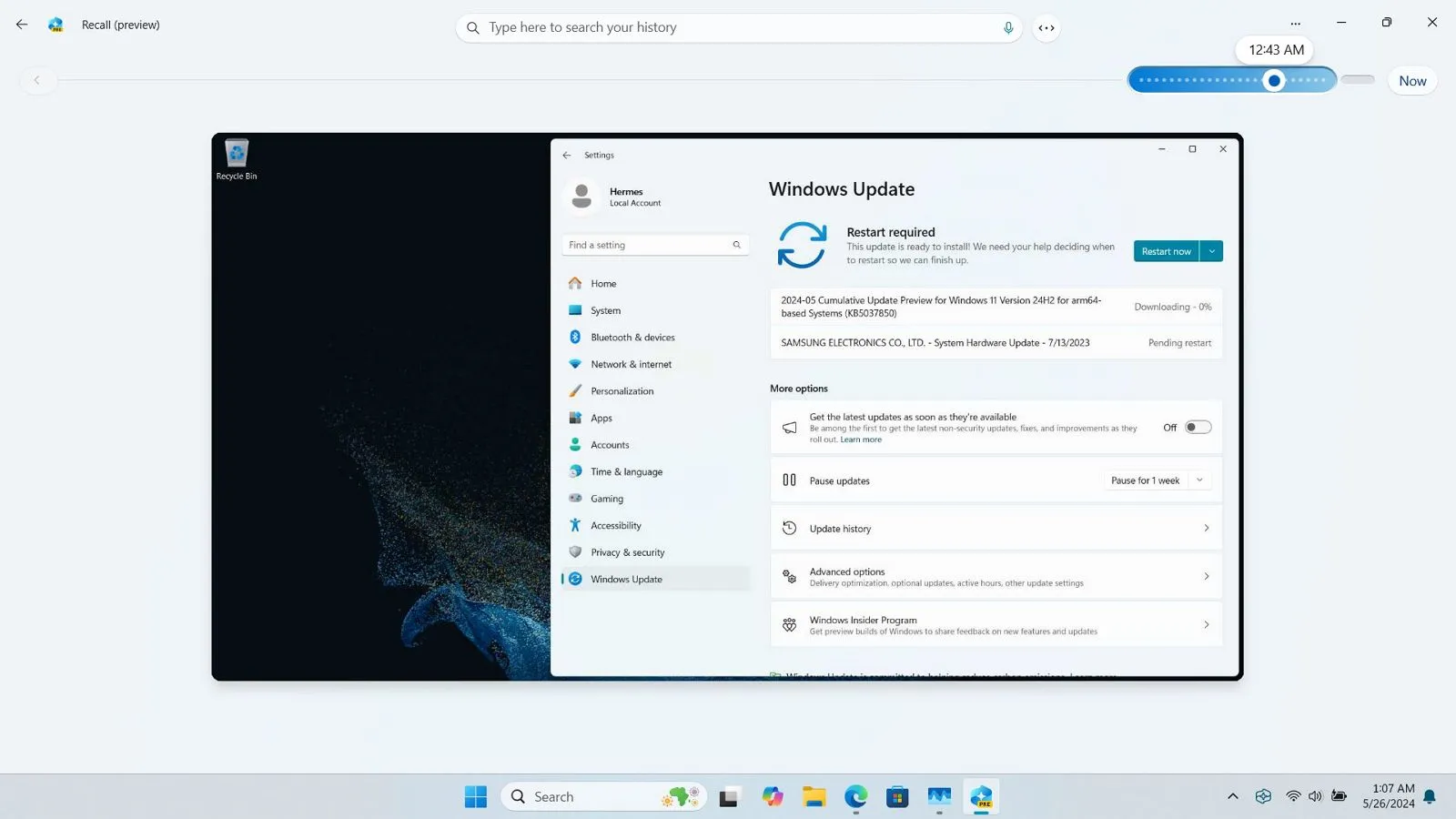- Someone already bypassed the requirements to get Windows Recall working on unsupported hardware.
- Officially, Recall is exclusive to Copilot+ PCs with Snapdragon X CPUs with NPU, 16GB of RAM, and 256GB of SSD.
- The workaround allows you to run the AI feature on older ARM64 CPUs with less than 4GB of RAM.
Someone has already figured out how to enable the Windows Recall AI feature on Windows 11 on devices without an NPU, but it’s not something you want to do. Although, according to the requirements, you will need a Copilot+ PC with a Qualcomm Snapdragon X series processor with an NPU (Neural Processing Unit), 16GB of memory, and at least 256GB of storage, @thebookisclosed on X has figured out how to bypass the requirements to run the feature on unsupported hardware.
This workaround works on ARM-based devices but could theoretically work on Intel and AMD processors. For this experiment, @thebookisclosed was able to get the feature running on a computer featuring a Qualcomm Snapdragon 7c+ Gen3 without an NPU and 3.4GB of memory.
The workaround enables the Recall app interface alongside the Taskbar icon and the System Tray menu, allowing you to open or pause the feature.
Although not every aspect of the feature works as expected, Windows Recall AI can take snapshots of the activities on the screen. The timeline option works to scroll back in time, and selecting a snapshot enables the screenray feature to interact with the elements, including copying text.

You can even use action buttons to open the app from the snapshot, delete the snapshot, and more. Also, the search function works, and performing a query will bring up the most relevant matches.
On X, @thebookisclosed also posted a short video demonstrating the Windows Recall feature in action. He noted that many sites have been saying that the lag is caused by using unsupported hardware, but in reality, the lag using the feature was due to the process of how the feature was recorded. However, running the timeline AI feature on hardware that meets the requirements will make the experience run smoother.
Although Microsoft has been very loud in assuring privacy and security regarding the Windows Recall feature, one of the biggest concerns is still what happens in the background and whether or not the feature uploads information to the cloud. However, @thebookisclosed notes that the processing occurs locally, even without an internet connection on the computer, during his testing.
So, why is Microsoft limiting Recall if you can run it on unsupported hardware? First, it’s important to understand that this workaround allows you to access the feature, but it doesn’t work as intended.
The reason is that Windows Recall relies on multiple language models (including Screen Region Detector, Optical Character Recognizer, Natural Language Parser, Image Encoder, and Image Encoder) that must run concurrently on the device. Although they might work on more traditional computers, the NPU is critical to this feature since it has been designed to speed up the process of the AI tasks better than a GPU and CPU.
As a result, it’s interesting that someone has found a way to enable the Windows Recall feature on unsupported hardware, but it’s not something you will want to do on a computer that doesn’t meet the requirements.
Windows Recall is a new feature part of Windows 11 24H2, which Microsoft plans to make available exclusively for Copilot+ PCs starting June 18, 2024. However, the feature is already integrated into the latest preview of the operating system through the Release Preview Channel, but since there are no devices with supported hardware, it’s not possible to enable the feature unless you use this workaround.
It’s important to note that the June 18 release is only for Copilot+ PCs. Everyone else will receive the feature update sometime in September or October 2024.
Windows Recall won’t be the only AI feature coming with version 24H2. Microsoft is expected to introduce other features, such as Windows Visual Effects, Live Captions, and Voice Clarity, that will also require the presence of an NPU.
The feature update will also roll out an update for Copilot, which will work as a regular application. In addition, this feature update will add the Sudo for Windows, the new Energy Saver mode, and support for Wi-Fi 7. You will able to create 7-zip and TAR archival formats from within File Explorer. This new version will introduce a new setup experience. It will enable Device Encryption on more devices. You will find various printer changes, including the new Windows Protected Print Mode. You will be able to configure color profiles from within the Settings app and a lot more.


